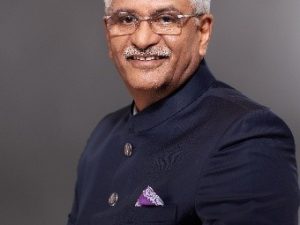In the last decade, India’s sacred geography has not merely been visited—it has been rediscovered. The mountains are no longer just landscapes; they are living sanctuaries. From the snow-draped shrines of Kedarnath and Badrinath to the meditative calm of Bodh Gaya and the golden stillness of Sarnath, India’s spiritual soul has stirred—one pilgrim at a time. Tourism in this era was not crafted through brochures but through bhakti, memory, and the civilisational impulse to reconnect. Between 2014 and 2024, this spiritual awakening reshaped the country’s cultural map. Kedarnath, once a symbol of tragedy, rose like a phoenix—welcoming over 16 lakh pilgrims in 2024, up from barely 40,000 a decade earlier. Ujjain, rejuvenated as a city worthy of Mahakal, drew 7.32 crore visitors in 2024. Kashi, reborn in light and sanctity, saw 11 crore people walk its sacred lanes. Bodh Gaya and Sarnath quietly echoed across continents, drawing over 30 lakh seekers in 2023. And then came a moment that transcended statistics—the Pran Pratishtha of Ram Lalla in Ayodhya in January 2024. It was not an inauguration; it was a restoration of the civilisational heartbeat. In just six months, over 11 crore devotees arrived—not just to witness, but to belong. Equally monumental was the Mahakumbh 2025, the world’s largest spiritual gathering, with over 65 crore pilgrims at the confluence of faith and transcendence. Together, Ayodhya and Prayagraj became twin lighthouses of Bharat’s spiritual renaissance. This was not tourism—it was homecoming. Under Prime Minister Narendra Modi’s leadership, this return was given shape, infrastructure, and soul. No longer a checklist-driven industry, tourism became a national mission to rediscover the sacred self. PM Modi’s visionary mantra— “Wed in India, Visit India, Invest in India”—recoded …
Read More »
Breaking News
- Tourism in Madhya Pradesh to Scale New Heights from the Vindhyan Valleys:
- Philippe Vignon: A Visionary Leader Driving Innovation Across Tourism, Aviation, and Education
- 75% of agencies say the number of content connections has grown over the past three years: Sabre
- ‘We are not only restoring monuments but also ensuring direct benefits to local communities’: Guj Tourism Secretary
- India at eighth position globally, just behind South Korea and ahead of Italy and Brazil: GBTA
- India remains number one source market for Bhutan at 94,280 arrivals in 2024
- Global Destinations to now represent Akoya Hotel & Spa in Reunion Island in India
- ITA Airways Official Airline Carrier of 82nd Venice International Film Festival
- ROHL launches fifth property in Mysore with Regenta Resort Tropical Villages
- FAITH Conclave 2025 focuses on centre-state synergy and GST rationalisation for tourism growth
- Agents see surge in demand for value for money and experiential travel in tier II cities
 Tourism Breaking News
Tourism Breaking News
